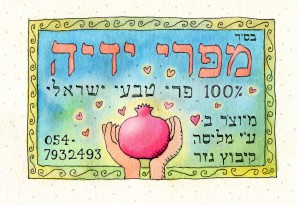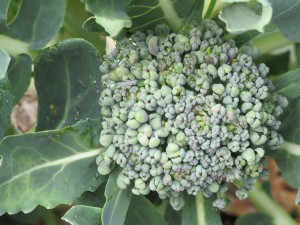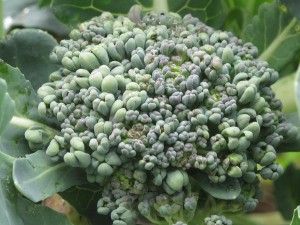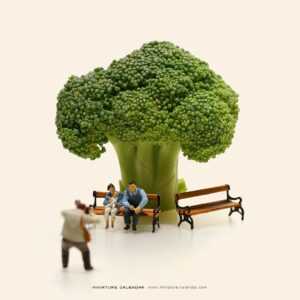
Two B’shvat Sale at Mipri Yadeha Natural Fruit Rolls
To celebrate the festival of nature next week and to cheer the lockdown with nature’s special sweetness, Melissa of Mipri Yadeha is offering a Two B’Shvat special: 1+2 for fruit leather or her amazing handmade dry fruits.
*limited to two per client, supply allowing.
__________________________

Izza Pziza Dairy is back in business!
Happily, the Izza Pziza dairy owners have informed us that the whelping season is going well and healthily, and production of their incredible dairy products is gradually resuming. From this week, you’re welcome to add to your vegetable boxes milk, natural yogurt, Ariel cheese (Labane), Dror cheese (Feta), as well as Dulce de leche.
Additional products will be added gradually as milk production grows.
_______________________________________This past weekend brought the much-anticipated rains. They came down gradually – sparsely on Wednesday night, with a fancier performance on Thursday night. Following a short respite over the weekend, the showers came in all their glory at the beginning of the week quenching our field’s thirst with more and more water. For us it’s perfect timing – the spring weather over the past three weeks allowed Gabi to continuously plow with his tractor, preparing the soil for the end- of-winter plantings. On Thursday, we were still able to work the land and even able to seed our spring potatoes (“spring” for the season they will be ready), just before the major downpours.
And as winter has finally arrived, not merely on the calendar, we will clear the stage for an actual wintery vegetable that absolutely LOVES rain, gray skies and most of all – cold weather:

Eat Your Broccoli…
The Battle of the Broccoli fought between mother and child has been here from time immemorial. But it’s always interesting to note that fathers, too, have paid some attention to their children’s eating habits, even in days of old. Rumor actually has it that Drusus, son of the Roman Emperor Tiberius, loved broccoli so much that he ate broccoli and only broccoli for over a month. After his urine turned green and his father scolded him, Drusus was forced to take a sad leave of absence from his favorite veggie.
Romans have always been the most loyal and ancient broccoli consumers. The vegetable’s name is derived from the Latin brachium, meaning branch or arm, which aptly describes the way broccoli flower heads branch out. Broccoli has resided in Italy from the 8th century BC, i.e. almost 3,000 years, but it actually originated in Turkey and the Eastern Mediterranean Sea region. The Etruski (an ancient nation that hailed from Asia Minor and settled in Italy) farmers in Asia Minor raised crops from the Brassica family. We have no written history about them, which is why their culture and faith remain somewhat of a mystery to this day, save for several facts like their love for the Brassica family… The Etruskis bequeathed this affinity to all the nations in the region with whom they conducted commerce: the Greeks, Phoenicians, Sicilians, Corsicans, Sardinians, and of course the Romans, who immediately fell in love with broccoli and continued to develop its family.
In Roman cuisine, broccoli was a desirable gourmet platter, otherwise known as “the five green fingers of Jupiter.” However, the early broccoli varieties were leaner, forming less of a “head.” They were also purple and turned green in cooking. Over time, the Calabrese specie was developed, sporting a larger flower head, and remaining popular and widely grown to this day.
On the European continent, broccoli proliferation took more time. Only in the 16th century did broccoli stamp its passport at the French border upon entering with the prestigious entourage of Katherina De-Medici who emigrated to France to marry His Royal Highness Henry II. Turns out the French were not impressed with the green immigrant: the esteemed chefs must have turned up their noses, exclaiming (read with a pronounced French accent): “Shame on him, that Levantine greenhorn! No class whatsoever! All those green curls out of control! Mon Dieu!!”
Broccoli is in fact a plant that arrives at the beginning of its blossom, and we essentially eat the young flower buds. If you leave the broccoli growing peacefully in the field rather than harvesting it, it’ll actually bloom. His head will spread open, and yellow and white florets will bloom from the dense green buds we eat. The flavor of these florets is sweet and spicy, but the stalks are fibrous and hardly suitable for cooking and eating. Here’s an example of a broccoli that passed its prime and is about to blossom (thank you, Chana, for all these beautiful photos):
Not all broccoli flower heads are suitable for eating. Here in the Middle East, it’s not common to eat broccoli leaves, but overseas in Italy or the Far East, for example, there are broccoli species grown for their greens, like Rapini broccoli or Chinese broccoli. Usually they are species which do not grow a dense scalp like the broccoli flower head we know, but rather bloom immediately, a gentle bloom, and their greens are harvested when they are young and tender. They are very popular additions to pasta or stir-fries. The mature broccoli greens are used in a similar way to kale. Their nutritional value is quite high, and they are rich in vitamins (A, B-complex, C) and minerals (iron and calcium). This week, indeed, some Chubeza boxes will contain broccoli greens as an alternative to kale, Swiss chard or spinach.
Meanwhile, back to our initial question: is it really so important to eat your broccoli? Once again, Mom (and maybe Dad) is right. Big time. Broccoli is rich in Vitamin A, i.e. beta carotene, evident in its strong green color, as well as folic acid, calcium (a cup of cooked broccoli is equivalent to the calcium value of half a cup of milk) iron (10% of your daily recommended consumption) absorbed in the body with the help of Vitamin C (one cup of broccoli equals one orange, Vitamin C-wise!). In addition, broccoli contains Vitamins B1, B2, B3, B6, magnesium, zinc and potassium.
But aside from its nutritional value, broccoli is gaining recognition for its important contributions to good health. For one, broccoli lowers cholesterol levels in the blood. Broccoli (as well as onion, carrot and cabbage) contains pectin fiber which binds to acids in the body, thus depositing more cholesterol in the liver and allowing less to be released into the bloodstream. Research has found that its effectiveness is equivalent to certain cholesterol-lowering medications. Broccoli is also rich in the mineral chromium which improves the function of insulin in adults who have a tendency towards type 1.5 diabetes.
And there’s more! It is common knowledge that certain members of the Cruciferae family, those responsible for the bitter flavor section of the family, are warriors in the cancer prevention battle. Recent research indicates that when chewing the plant, the Glucosinolates break down to important phytochemicals. Two have been particularly well researched: Indole and Sulforaphane. Both these compounds, which surface upon slicing, chewing or tearing apart the vegetable, have been found to delay the growth of cancerous stem cells. Their course of action is similar to other anti-cancerous components that are used clinically, by actively disturbing cell redistribution. Sulforaphane and Indole are even more prominent in broccoli sprouts. (While we’re on that subject, you can order broccoli sprouts and other excellent sprouts from Udi at Achituv via our order system).
The bitter (and spicy) characteristic of the broccoli and its relatives is also a result of the Glucosinolates, and more accurately – the mustard oil within it. These vegetables most probably developed this feature as a form of self-defense: when a harmful creature or insect attempts to assault the vegetable plant by chewing, cutting or injuring it, one taste of the sharp, piquant flavor is enough to send the aggressor fleeing. The bitter flavor can also send human beings fleeing, including many children who recoil in the face of broccoli (aside from Drusus, apparently). Fortunately, as we grow older, our taste buds develop the ability to deal with bitterness and even enjoy it (coffee, beer, broccoli…) Good thing, too, as broccoli and its family members are super vegetables that are tasty and healthy.
So as not to harm broccoli’s very valuable components, take care not to overcook. Though light cooking does have the advantage of making more broccoli segments edible, it’s best to consume your broccoli raw, steamed or very lightly cooked (3-5 minutes). Check our recipe section (in Hebrew) for excellent broccoli salads.
Hey, listen to your mother sometime.
Tips
- Broccoli fares well in the fridge. Store it there in a plastic bag to protect its nutritional value, especially the Vitamin C. Another possibility, albeit less popular, is to immerse the broccoli stalk in deep ice water (like a bouquet of flowers), covering the inflorescence with a loose plastic bag, and change the water daily.
- Do not wash the broccoli before you refrigerate. Moisture will damage it.
- When you cook/steam/lightly sauté the whole broccoli, begin with the stalks. They are harder and need more cooking time. Add the florets and leaves later (broccoli leaves are delicious and definitely worth a taste!).
- Go easy on the cooking so the broccoli remains solid and its flavor is stronger. Best to steam, not to cook.

And finally, sending you a smile of admiration: Japanese artist Tanaka Tatsuya has a different way of looking at things. With imagination, creativity and humor, he creates charming lifelike scenes from daily objects, fruits and vegetables and tiny figurines. Just check out these photos. You’ll never look at broccoli quite the same way again…
Wishing you a nice, rainy week,
Alon, Bat Ami, Dror and the whole Chubeza team
__________________________________
WHAT’S JOINING THE BROCCOLI IN THIS WEEK’S BOXES?
Monday: Kale/Swiss chard/spinach/totsoi, lettuce, Jerusalem artichokes/green fava beans, cauliflower/cabbage, cucumbers, tomatoes, kohlrabi/fennel/daikon, arugula/mizuna/parsley, broccoli, carrots, new onions/leeks.
Large box, in addition: Celery/celeriac/parsley root, turnips/beets, potatoes/snow peas or garden peas.
FRUIT BOXES: Bananas, red apples, avocados/kiwi, oranges/pomelit, clementinas.
Wednesday: Kale/Swiss chard/spinach/mizuna, lettuce, Jerusalem artichokes/broccoli, cauliflower/cabbage, cucumbers, tomatoes, kohlrabi/fennel, arugula/parsley, carrots, new onions/leeks, daikon/turnips/small radishes.
Large box, in addition: Celery/celeriac/parsley root, beets/potatoes, green fava beans/snow peas or garden peas.
FRUIT BOXES: Bananas/lemons, red apples, avocados/kiwi, oranges/pomelit, clementinas.






